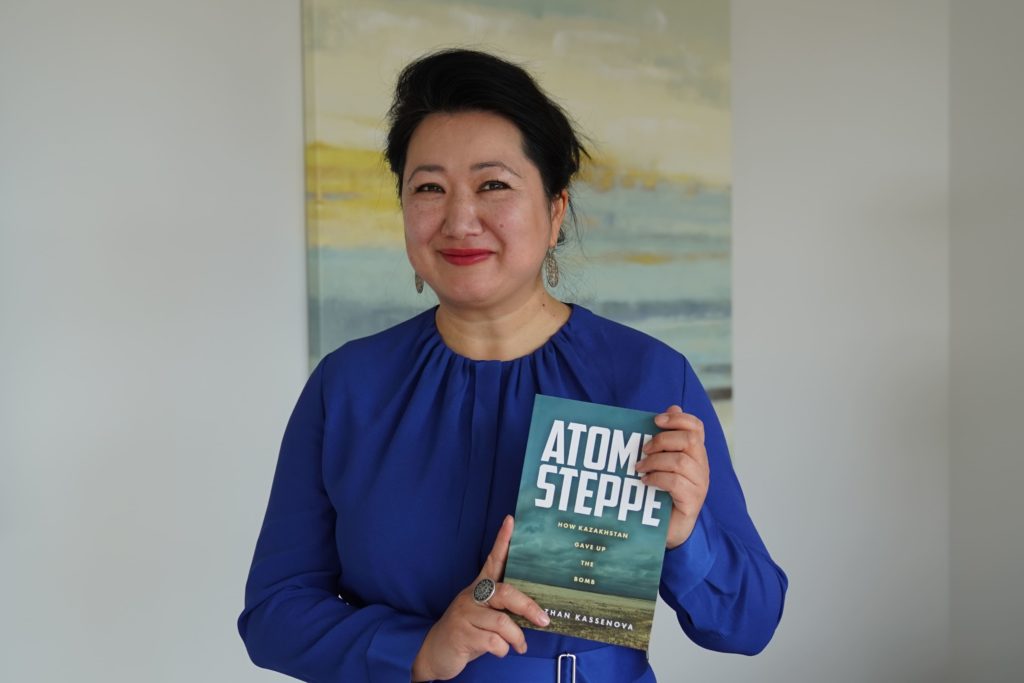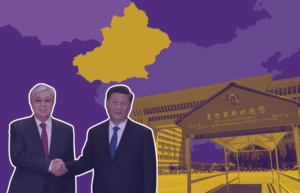The collapse of the Soviet Union left Kazakhstan with the fourth largest nuclear arsenal in the world and little say in its fate. In her book Atomic Steppe: How Kazakhstan Gave Up the Bomb, nuclear expert Togzhan Kassenova reconstructs the 40-year history of nuclear testing in the Kazakh grasslands – and tells the story of how the newly-independent country became a nuclear-free state.
Novastan talked to Ms. Kassenova about her book, the USSR’s complicated legacy, Nazarbayev’s role in shutting down the infamous Semipalatinsk Polygon, and what Russia’s threats to use nuclear weapons in Ukraine could mean for Kazakhstan.
Novastan: The history of nuclear testing is a highly sensitive topic, and it is obvious that it is difficult to find any information about it because most of the archives are still closed. How did you work on your book?
Togzhan Kassenova: I gathered information through archival research and by interviewing witnesses of the events I was describing. I did not have issues with archives in Kazakhstan or the United States. The presidential archive in Almaty was the most helpful. There is also a wonderful archive in Semey – the Center for Modern History Documentation. These archives are open to researchers, and I could easily use them. However, I faced limitations. I could read anything that was declassified and open for research, but I could tell certain chunks of documents were missing. For example, there was nothing I could find from the 1970s. I had documents on the 60s, I had some documents on the 80s and beyond, but nothing on the 70s. In the US, presidential archives are excellent, but there are also some limitations. Most US governmental documents become available after about 25 years. As I was interested in the 90s, a lot was already available. There is a system called mandatory declassification review – you put in a request [to see classified documents], and it goes to the relevant agency which decides if they can declassify the requested document. It takes years but it works. In Russia I had no issues working in regular archives, but the archives that I needed the most, such as the archives of the Ministry of Atomic Energy (MINATOM) or the Ministry of Defense, are inaccessible to researchers. I submitted formal requests, and all of them were denied. In short, I worked with what was available in the archives, but I will be the first to say that there were many black holes. I hope with time, we will learn more and more. I interviewed former policymakers and diplomats in decision-making roles, but it was even more important to me to interview people from the Semipalatinsk region. That was challenging, but in a different way. It was hard emotionally and ethically, because those were personal family histories, and it was very important not to present the people merely as victims. I wanted to show their resilience and love for the native land.
Novastan: When reading your book, I could not shake the feeling that the first tests were conducted in complete darkness. Nowadays, it is hard to believe that someone could be so reckless. Several years had passed after Hiroshima, so the scientists should have had at least some data on the toll of nuclear explosions on human life. So I wonder if those sacrifices were deliberate and cold-hearted? Did the project managers not care about human casualties, or was it rather this banality of evil with people “just trying to do their jobs”?
T.K.: You are absolutely correct that the first tests were conducted, as you described, in complete darkness – in an information void. The civilians were not informed, and no one considered the local community. I cannot speak on behalf [of the project leaders], I cannot look inside their heads, but this is how I view what transpired. Soviet military leaders were rushing to stay on equal footing with the US. Hiroshima and Nagasaki had already happened, so it was obvious that nuclear explosions caused severe damage. Obviously, Soviet planners understood that it was bad, [but] maybe they didn’t understand the details. I don’t think they understood the consequences of long-term exposure to low-level doses of ionizing radiation. I don’t think they operated with the objective, “Let’s test the weapons to see the impact on people.” It was more like, “We need nuclear weapons, and we don’t care about the locals. We accept the collateral damage, but we don’t know yet fully what the damage will be.” I think this nuance is important, especially for the discourse within Kazakhstan. I am against painting it as though the site was chosen because they wanted to experiment on ethnic minorities or on Kazakhs [in particular]. I think it was more a lack of thought, lack of care, and complete dismissal that local communities would suffer. But as the tests continued, the harmful impact of the tests could not be denied, and that was when it should have become an ethical question of responsibility, but the Soviet military leadership didn’t care. They monitored people’s health for military purposes to understand how a nuclear war would impact humans. While collecting data for military research, they didn’t provide any medical treatment to local people.
Novastan: And the very first test was conducted in rainy and windy weather, which dispersed radioactive contamination for miles around the test site – like there was zero thought given to the whole operation.
T.K.: They could have waited for better weather. [There is] something that I don’t mention in the book because I cannot prove it – but in general, [there is a belief] that the military would often wait for the wind to go toward the steppe [instead of towards the military settlements]. I don’t want to give you incorrect information. In the official military description, it sounded as though [the wind would blow] towards the uninhabited steppe. But if you speak to locals in the region, there is a widely accepted belief that the military waited for the wind not to blow towards their military settlements, but they did not care about other directions. But I could not prove it.
Novastan: Another weird, illogical point to me was that with all that secrecy surrounding the Polygon, with all the attempts to suppress the information, there were some major breaches of security, and they were not acted on, and they were not even foreseen. As you mentioned, the Semipalatinsk region was the major supplier of meat, they were selling meat products across the whole Soviet Union, and then at some point, the meat became radioactive because the livestock had been feeding on contaminated grass. How can one keep that a secret? How could this scenario not come to mind when planning to build a Polygon? And even if it was not obvious during the planning stage, when one can argue that the region is isolated and there are no big cities nearby, how can one not acknowledge the risk and keep testing when it is already happening?
T.K.: That is such a good point, and it makes me think that no Soviet life had much value, but some lives had even less value. The site was chosen for practical reasons. For the Soviet military planners, it was logical: the site was remote (they even called it uninhabited, though it was completely untrue) and there was access to the construction material. So for them, it was a rational decision. But you are right: it would be difficult to control radioactive contamination, to keep it within one specific region.
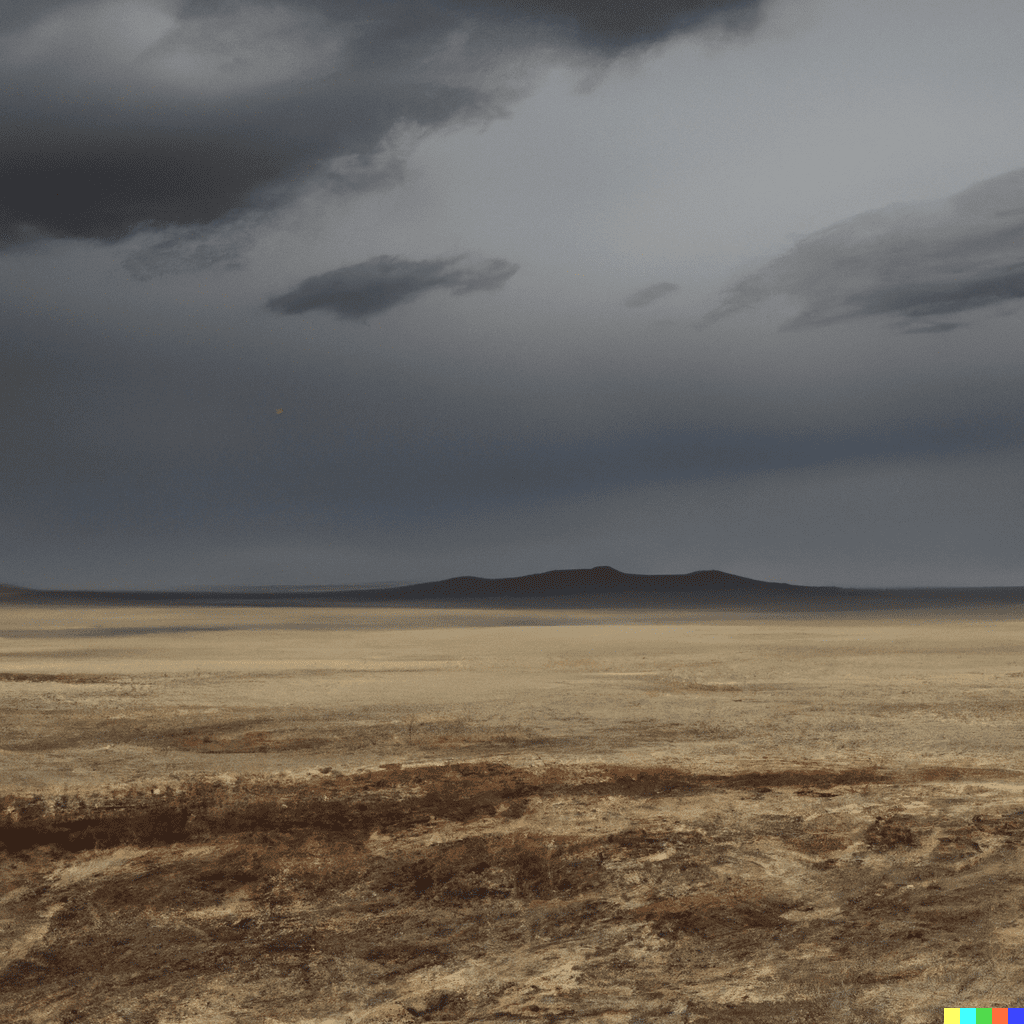
I will give you another telling example. There was significant radioactive contamination after one of the tests. The Soviet military authorities knew that the grain from the region was highly contaminated. So, what did they do? They made sure that the grain was distributed across the Soviet Union and not sent for export. They cared about the international community not getting the grain and finding out it was radioactive. They did not care that their own citizens would be consuming it. Another thing I mention in my book is how during the more powerful tests, the authorities would advise people to come outside, which made no sense. I think they did not want to people to suffer injuries from [breaking] glass if they stayed inside the house. For Soviet authorities, it was better if people were outside of the house, to avoid any visible injuries. Obviously, locals were getting a higher dose of exposure because they were outside. But that did not bother the military authorities.
I do not want to present the Soviet Union as an evil empire, but I think a complete lack of respect for human life is pretty evident. And some lives, in this case, the lives of people of Semipalatinsk region, were respected even less.
Novastan: The Polygon was closed in 1991, and I would like to ask you about Nazarbayev’s role in this process. I got the impression that he was a bit hesitant in the end – he always promoted the Nevada-Semipalatinsk movement, talked about the Polygon being harmful, pushed for action, and gave that speech about not having enough information on the consequences. But at the end of the story, when you just need to sign a decree to close the Polygon, it took him quite some time to do that. Is it only my impression, and in reality, he was just a busy person who did not have time or was he not ready to make that big step?
T.K.: The reason why I do not have much detail [is because] there is only one account of that specific day [when the decree to close the Polygon was signed]. If we look at Nazarbayev’s letters to Gorbachev over the period of 1989-1991, you will notice changed tonality. I don’t know if you picked it up in the book – Nazarbayev, as any other Soviet Moscow-appointed functionary, was dependent on the “Center.” Initially, in the early 1989, Nazarbayev made sure that requests from Almaty came in a Soviet bureaucratic way. The requests from the Kazakh government sounded timid: “There is this Nevada-Semipalatinsk, and they are protesting against testing, and we feel that we have done everything we could as a republic.” Towards 1991, his language became strong. I think he was ready to shut it down. Speaking about the specific day, we should remember that it was just a few days after the attempted coup d’état in Moscow. Many other things were happening: maybe the Nevada-Semipalatinsk movement was more determined and pushing, maybe the Kazakh political establishment was going through its motions. I do believe Nazarbayev was ready. While I do not have enough information on that specific day, I believe it was probably more for symbolism that they wanted to make sure that the decree [to close the Semipalatinsk Polygon] was signed on August 29, the day of the first Soviet atomic test. Here I want to underscore something. Very often, the narrative within Kazakhstan is very personalized and Nazarbayev-centered. I think, especially on the closure of the Polygon, it is so important to give credit to the Nevada-Semipalatinsk movement and all the people who rallied. It is important to tell the story and give credit to all actors. Kazakhstan’s society and establishment worked together at different levels, so it is not the story of only one person signing the decree.
Novastan: From the book, I felt it was a grassroots initiative, and Nazarbayev joined it at the very last moment when he saw that you could not just sit it out and wait.
T.K.: It was definitely grassroots, all those thousands of people protesting sincerely on their own goodwill, but I think the movement was also beneficial for the political establishment. The anti-nuclear movement and the Kazakh government were not entirely separate. For example, in the book, I describe how the participants of international marches were welcomed in Kazakhstan, provided with food and helped with sleeping arrangements, how local authorities helped them. It makes me realize that there were, what we would call in Russian, “administrative resources” present. Protests and rallies were not prohibited but supported by local authorities. And this is something we still don’t know in detail, but I would not separate the movement from the government because I think all parts of Kazakh society – the political establishment and the citizens – worked together.
Novastan: The survivors of nuclear tests get regular compensation from the state. Yet you describe a situation with Kazakh soldiers deployed at the Polygon next to the Russian ones, and those ex-soldiers are excluded from these payments, despite also being exposed. How so?
T.K.: This is a question of who bears responsibility for nuclear tests. It was a Soviet program. When it came to useful things from the Soviet Union, Russia wanted to inherit them. For example, Russia inherited the Soviet Union’s seat on the UN Security Council.
But when it comes to the impact of the Soviet nuclear testing program and its impact on the people around the Polygon, then suddenly it is: “That was done by the government of a country, which doesn’t exist anymore.”
I believe Russia, as the inheritor of the Soviet nuclear arsenal, bears responsibility for the entire Soviet nuclear program, and it would be logical if atomic soldiers and veterans of the Soviet nuclear program were covered by Russian legislation on assistance for “atomic soldiers,” but that legislation applies only to the Russian citizens.
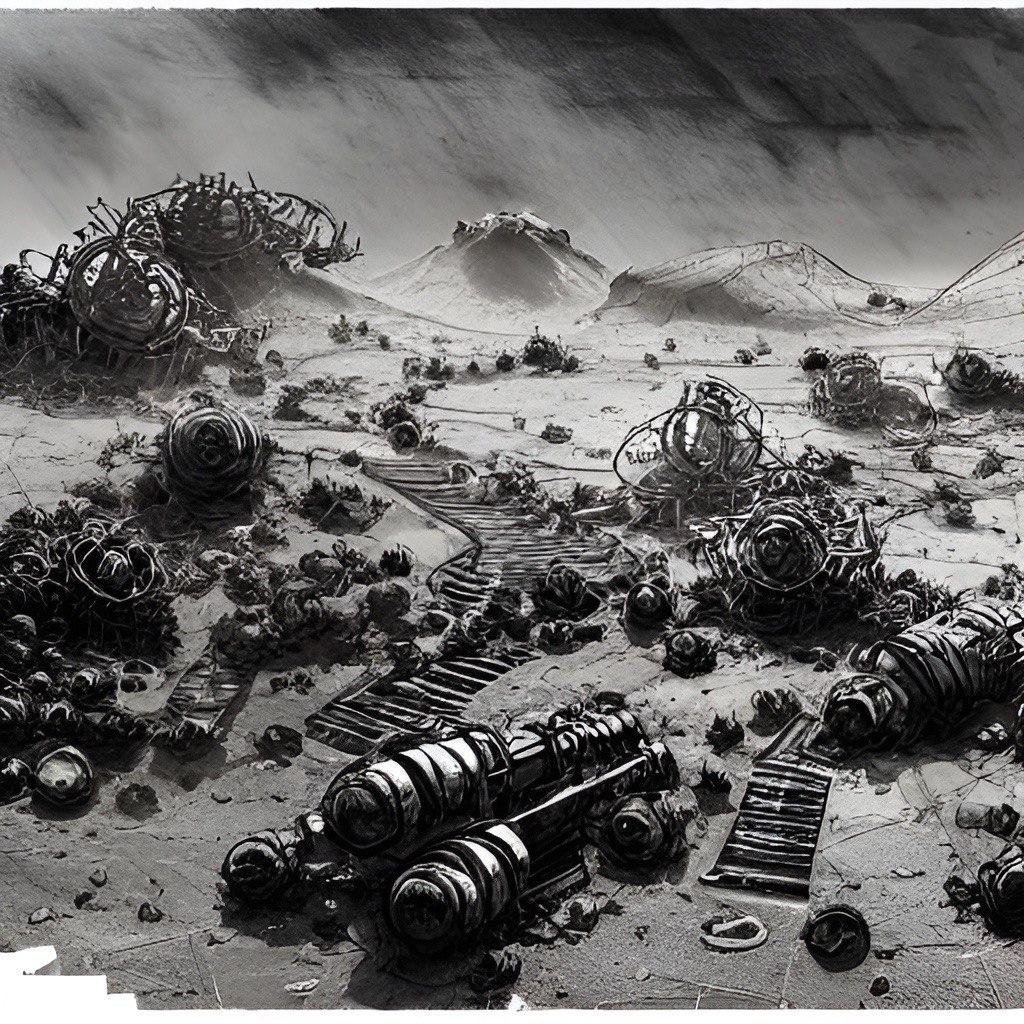
Kazakhstan’s law on assistance for victims of Soviet nuclear tests was adopted in 1992. The focus was on the civilian population, and the narrative was more along the lines of: “It was the Soviet military versus local population.” The law did not apply to “atomic soldiers.” Some of the stories are heartbreaking. Many of those soldiers are not alive anymore. There was an association of the atomic veterans of Kazakhstan, and I don’t even know if they have any people left now.
Novastan: Let’s talk about how Kazakhstan actually “gave up the bomb.” Kazakhstan signed the Budapest Memorandum, which gave assurances that Russia will not threaten Belarus, Kazakhstan, or Ukraine with nuclear weapons in exchange for their denuclearization and would respect their sovereignty and territorial integrity. Yet last year, Russia did exactly that: threatened Ukraine with using its nuclear arsenal. Where does that put Kazakhstan in the current situation?
T.K.: Kazakhstan and Ukraine sought security assurances in return for giving up their nuclear arsenal. For Kazakhstan and Ukraine, receiving security assurances from nuclear powers was fundamental to their decision, and they invested a lot of effort into negotiations on that matter. Kazakhstan signed an important bilateral document with the US – the US-Kazakhstan Charter on Democratic Partnership, in which Washington reiterated its security assurances to Kazakhstan. The Budapest Memorandum, as you mention, committed the three nuclear powers to exactly that: respect for territorial integrity and sovereignty. The leaders of Russia, the United States, and the United Kingdom signed the memorandum, so it should carry a lot of weight.
But if you look into the wording, there is no enforcement mechanism. There is no “what happens if…” I think there is regret within Ukraine now that it was not spelled out what would happen if one of the parties goes against its own promises. […]
Russia’s violation of the UN Charter and its commitments under the Budapest Memorandum will carry long-term consequences because the more countries disregard their promises, the harder it will be to believe in them, which is very troubling. It is relevant for Kazakhstan because we signed the same document, Kazakhstan received the same promises. What is happening now makes everyone more worried.
Novastan: So after the collapse of the Soviet Union, the new republics landed in a kind of a stalemate situation: you are not allowed to be a nuclear state, but you also do not get any security guarantees if you promise not to seek a bomb. That does not seem fair.
T.K.: Global nuclear order is unjust and unfair. There are nuclear haves and nuclear have-nots. In the 1960s, five countries had nuclear weapons and wanted to freeze that state of affairs. They came up with a bargain under the Nuclear Non-Proliferation Treaty (NPT): five countries were recognized as nuclear powers and promised to disarm eventually and other countries agreed to never develop nuclear weapons in return to access to peaceful nuclear technology. Why is it considered a norm that five countries have nuclear weapons? Why is it somehow acceptable for them to keep nuclear weapons with no signs of disarmament while for everybody else the choice is: you are either a non-nuclear weapon state or a pariah state? The NPT reflects the global world order, but the global world order has been changing, right? Countries like Brazil, India, and other nations of the Global South have been challenging where they stand in the world hierarchy and the kind of power they carry, and that’s why I think the global nuclear order will be forced to change too. Countries are not quietly accepting this unjust order; shifts will happen. It is the core of what we are dealing with in the nuclear field at the moment. You have a fundamentally unfair system, but at the same time, you need to keep the norms, and you need to promote these norms because otherwise, it will be chaos. That is the tension we exist in.
Novastan: Did the Nuclear Non-Proliferation Treaty (NPT) change after the Soviet collapse? What happens if a nuclear power falls apart and more than a dozen new countries emerge?
T.K.: That was exactly the point of negotiations between the Soviet “nuclear” republics (Belarus, Kazakhstan, and Ukraine), the United States, and the international community for more than two years. Belarus, Ukraine, and Kazakhstan signed political documents in which they promised to join the NPT as non-nuclear weapon states. From the start, Kazakhstan, Belarus, and Ukraine didn’t have the option to keep nuclear weapons if they wanted to avoid a pariah status within the international community. As far as the NPT was concerned, new states could only join it as non-nuclear weapon states. At the same time, those Soviet nuclear weapons were not “automatically” Russian. Resources from Kazakhstan and Ukraine were used to build those weapons. Plus, property remaining on the territory of each newly independent state at the time of the Soviet collapse belonged to each republic.
Read more on Novastan:Central Asia and Russia: an ever-changing relationship
Nothing should happen by default, everything requires negotiations. Ukraine now questions why Russia inherited the Soviet seat at the UN Security Council, why Russia got to keep Soviet nuclear weapons, and so on. There was no precedent in history when a nuclear power disintegrated, and several independent states found themselves with parts of the nuclear arsenal.
Novastan: You describe a situation in which newly independent Kazakhstan is left with the fourth largest nuclear arsenal in the world, with no ability to use them or stop your neighbor with the red button to use them on your behalf. It is only natural to want to get rid of them as soon as possible, but what I noticed from your book is that Russia seemed not interested in these weapons or nuclear material during the negotiations. How so? And why was it mostly the US involved in these negotiations and not other nuclear powers? Were they not interested either?
T.K.: There was a difference. Russia and the US agreed that Russia should be the sole inheritor of all Soviet weapons. Russia was not interested in Belarus, Ukraine, or Kazakhstan keeping any nuclear weapons. It’s not that Russia needed those weapons because, as you know, they had thousands of them. Besides, under US-Russian arms control process, there has been gradual reduction in the number of warheads. Many of the warheads moved back to Russia had to be dismantled anyway.
But it was important to Russia that it was considered the inheritor of the Soviet nuclear arsenal, and while such a premise shouldn’t be accepted by default, that was how Russia perceived itself. Russian leadership believed there could be only one post-Soviet nuclear power, and that it should be Russia.
Politically Russia was on the same page with the US. Washington did not want any other former Soviet republic to become a new nuclear power.
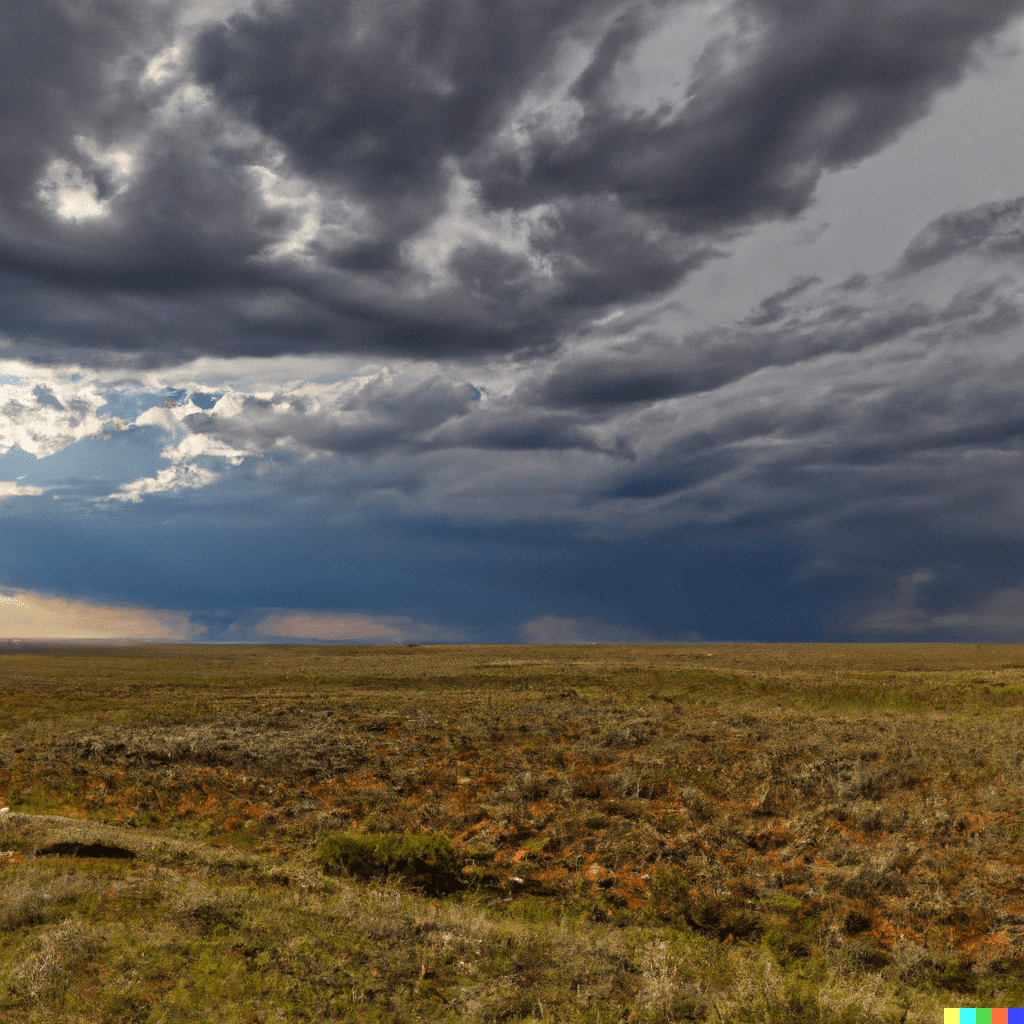
Moscow’s position on nuclear material was different. Russia did not need that extra material because it was a headache. They had more than enough [of HEU], and moving nuclear material across borders was a complicated and a very expensive process. The US was the leading negotiator in Kazakhstan’s overall denuclearization process because they had the power and because they had something to offer in return. The focus of my book is on the US because it represented the international community; the US was the most invested party in all of this. Other powers assisted too. There were various multilateral programs, especially in the field of nuclear security, but the role and involvement of the United States cannot be compared to any other country.
Novastan: How did American public perceive this involvement? You mention this huge operation, Project Sapphire, when nuclear material sitting in an unguarded nuclear facility in Kazakhstan was transported to American soil to ensure that it would not get into the wrong hands. You cannot hide an operation of this scale; I imagine not everyone was happy about that nuclear material.
T.K.: Initially, when policymakers in the United States discussed what to do with Kazakh highly enriched uranium, some officials wanted Russia to take it back, precisely for the reason you identified. They worried about environmental organizations, but I am unaware of any protests or public outcry in response to this specific operation. Speaking about secrecy, someone within the US media found out about the operation before the material reached the Oak Ridge facility in the United States. The White House asked the press to hold the story for 24 hours, and the journalists complied. The story hit the US newspapers once material entered the facility, but from what I have seen, there was no splash in the public space. Again, I would underscore that it wasn’t nuclear waste: it was nuclear material.
Novastan: Kazakhstan has two nuclear powers as neighbors, and one of them is engaged in military aggression right now. The US supports Ukraine in this war. Are we heading towards a new arms race?
T.K.: Russia and the United States have more than enough nuclear weapons to kill the planet many times over. Not that we should ignore the numbers, but in existential terms, these two countries have so much that they have no military or strategic incentive to increase their arsenals. Simply because they already have an overkill capacity. Currently, one remaining arms control agreement between the US and Russia keeps the number of their warheads under specific limitations. I do not think the US or Russia will try to increase their arsenal in terms of numbers, but it is another question of what they can do in terms of quality. We can expect calls for further modernization of nuclear arsenals, which is also bad news for the international community.
Read more on Novastan:Kazakhstan’s gradual divorce from Russia
The fundamental issue is the instability of the international system. You have a major conflict involving a country with nuclear weapons, so there are many risks. We cannot comprehend the consequences of what is happening now, which is the scary part – knowing they are going to be consequences but not knowing their extent or direction. This just underscores the insanity: as long as nuclear weapons exist, we face the risk that a conventional conflict will escalate into a nuclear war. This is the fundamental danger we are constantly facing.
Novastan: Is it likely that all countries will be nuclear-free in the near future? Will we be able to live to see that?
(long pause)
T.K.: At some point in the future – yes. Otherwise, I wouldn’t be in the profession I am in. The arc of history is bending in the right direction in global terms, despite what I just said about the current war. It’s impressive that recently the majority of countries were able to come together and sign the Treaty on the Prohibition of Nuclear Weapons, and that more and more nations are reclaiming agency in the conversation about nuclear issues. Before, it was more of “We are nuclear powers, and we are deciding [the matter] among ourselves, and you have no voice, and no one cares what you say.” There is a change in the dynamic. But I would be lying if I said I’ll see a nuclear-free world. It will not be my generation. This interview has been edited for clarity.
Interview by Anna Wilhelmi, Novastan English editor
Edited by Mari Paine
Illustrations are AI-Generated by DALL-E and Wonder
For more news and analysis from Central Asia, follow us on Twitter, Facebook, Telegram, Linkedin or Instagram.
 “I would be lying if I said I’ll see a nuclear-free world.” An interview with Togzhan Kassenova
“I would be lying if I said I’ll see a nuclear-free world.” An interview with Togzhan Kassenova 
